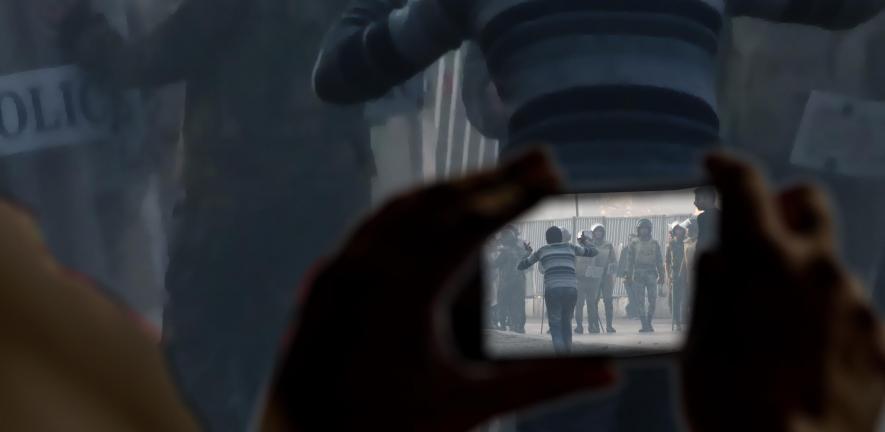
Social Media now provides a global platform for sharing first-hand ‘evidence’ of human rights violations. For civilian witnesses living in remote or isolated locations, social media may be the only lifeline open to them. But how can we distinguish authentic reports from propaganda, hoaxes and digital manipulation?
We know from fact-finders that civilian witnesses do not necessarily know what metadata is or that they should include it with their information – even something as simple as panning the horizon for landmarks or turning on geolocation features.
Dr Ella McPherson
The Whistle provides human rights researchers, NGO’s and international organisations with a wealth of cross-referenced information, reducing the time and digital expertise currently required to verify digital witness accounts of human rights violations.
“News is disseminated fast but verification is slow and often contested,” says McPherson. “For human rights NGOs, credibility can be lost in a moment if the evidence they are using for advocacy or in courts is later found to be false. No matter how devastating the documented violations, they cannot act on them unless they can verify them first.”
When so much is at stake, it is vital that NGOs and other international organisations are able to respond to authentic reports of human rights abuses, whilst ignoring the plethora of fraudulent evidence which is continually being produced. In order to do this NGO’s may employ ‘fact-finders’ to research and corroborate reports that come in via social media or online, by checking and cross-referencing metadata relating to location, time, weather, landscapes and digital footprints.
However, the sheer number of videos and photos purporting to document events is becoming overwhelming. When everything requires verification through the complex and lengthy process of metadata corroboration – the result is what McPherson has described as a ‘bottleneck’ that is disabling a significant source of potential witness accounts.
The main issues at stake are that many civilian witnesses lack digital literacy, are unfamiliar with metadata and do not know that they should include it in reports. This makes evidence much harder to verify. Similarly, human rights fact-finders may also lack the knowledge necessary to accurately use online verification tools, which are complex and rapidly developing. Existing digital verification tools also require extensive manual cross-checking, which require a substantial amount of time and expertise. In addition to these problems, witnesses with existing digital footprints – organisational affiliations or a social media profile – are easier to verify. This can mean they are more easily heard than individuals with minimal resources or a negligible footprint online.
The Whistle is a digital platform that empowers both witnesses and fact-finders, by facilitating accurate reporting and speeding up the process of verification.
A mobile app simplifies the process of reporting for the witness, whilst simultaneously prompting them to include the metadata information required for verification. Aside from providing more metadata for the fact-finder to corroborate, The Whistle also serves to educate witnesses about what data is most helpful and why. It can also signpost them to sources of information and support around security and human rights.
On the receiving side, a ‘dashboard’ aggregates the reported information and automates a process of cross-checking, comparing social media reports, weather information and map databases, bringing together a variety of existing digital verification tools and practices in one place. It does this by using algorithmic indicators in addition to human input, a combination which is unusual in this context. The application automatically extracts metadata about the source, the location and the channel of a report (e.g. a video) as well cross-referencing specific frames against image databases to see if the report has previously appeared online in another guise.
The Whistle project was initially funded by the ESRC IAA, which enabled substantive market research that revealed a gap in the market. The IAA funding also facilitated the launch of a landing page website at www.thewhistle.org, and the development of a partial prototype. As work progressed, it became clear that the design and programming of the application would require more time and funding than originally anticipated. McPherson and her team subsequently partnered with Wikirate, an organization dedicated to eradicating corporate abuses through transparency about companies’ social and environmental impacts. Together with a number of other partners, Wikirate and The Whistle successfully applied for a three-year Horizon 2020 grant. The team has grown to six members and is currently working with NGO partners to develop and test a full prototype of The Whistle and to gain feedback from civilian witnesses. Looking forwards, the application plans to facilitate the reporting and verification of civilian witness accounts of human rights abuses in partnership with NGOs across the world.

